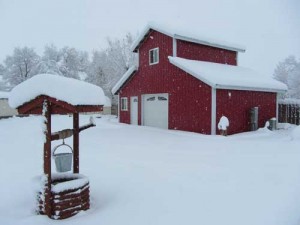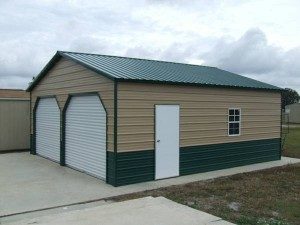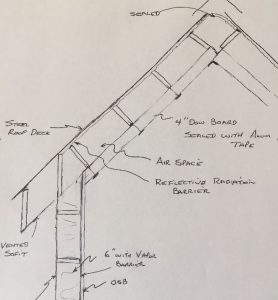Snow Load Duration Factor
Wood is a natural, fibrous non-homogeneous material. Because of this wood has several unique characteristics. One of these properties is duration of load. This is the ability of wood to resist higher stresses when loads are applied for a short duration of time. In other words, wood has a higher strength when a load is applied instantaneously than it does when the load is applied for a long period of time. This relationship between time, strength, and load magnitude was observed as early the mid-sixteenth century. The factors used for design in the NDS (National Design Specification for Wood) today were developed in 1948 proceeding research done on load duration during World War II.
 Duration of load is the total cumulative length of time the full design load is applied. For example, when assigning a duration of load factor (CD) for a snow load in allowable stress design (ASD) procedures, the CD factor is based on the total length of time the design maximum snow load would be applied. Tabulated design values in the NDS apply for “normal” cumulative load durations of approximately 10 years, and appropriate CD factors are applied by the designer for other cumulative load durations.
Duration of load is the total cumulative length of time the full design load is applied. For example, when assigning a duration of load factor (CD) for a snow load in allowable stress design (ASD) procedures, the CD factor is based on the total length of time the design maximum snow load would be applied. Tabulated design values in the NDS apply for “normal” cumulative load durations of approximately 10 years, and appropriate CD factors are applied by the designer for other cumulative load durations.
The NDS assumes 10 years is the “normal” cumulative load duration for wood members and connections. Therefore, a factor of CD = 1.0 applies for loads with a cumulative duration of ten years during the life of the structure. CD = 1.0 is used for most storage loads and floor live load scenarios. When load combinations include loads of shorter durations (e.g. – snow loads, wind loads, seismic loads), the load duration factor is selected based on the shortest duration load in the combination.
In most instances, wood members supporting roof snow loads are able to use a CD factor of 1.15. The use of this factor, assumes the design roof snow load will remain on the roof for a cumulative total of two months or less, over the life of the structure.
The last sentence is the important one – as there are areas where the design roof snow load will remain supported by a given member for longer time spans. These jurisdictions typically use a factor of CD = 1.0. Effectively the wood members in these areas must support a 15% greater load, than ones where CD = 1.15.
Among the jurisdictions we have found where CD = 1.0 for roof snow is used include higher elevation areas of Kittitas County, Washington and areas in the State of Utah with elevations above sea level of over 5000 feet.
Building is “snow country”? Better find out from your Building Official what Duration of Load Factor will be applicable for your situation, and structurally design appropriately to prevent failures!









